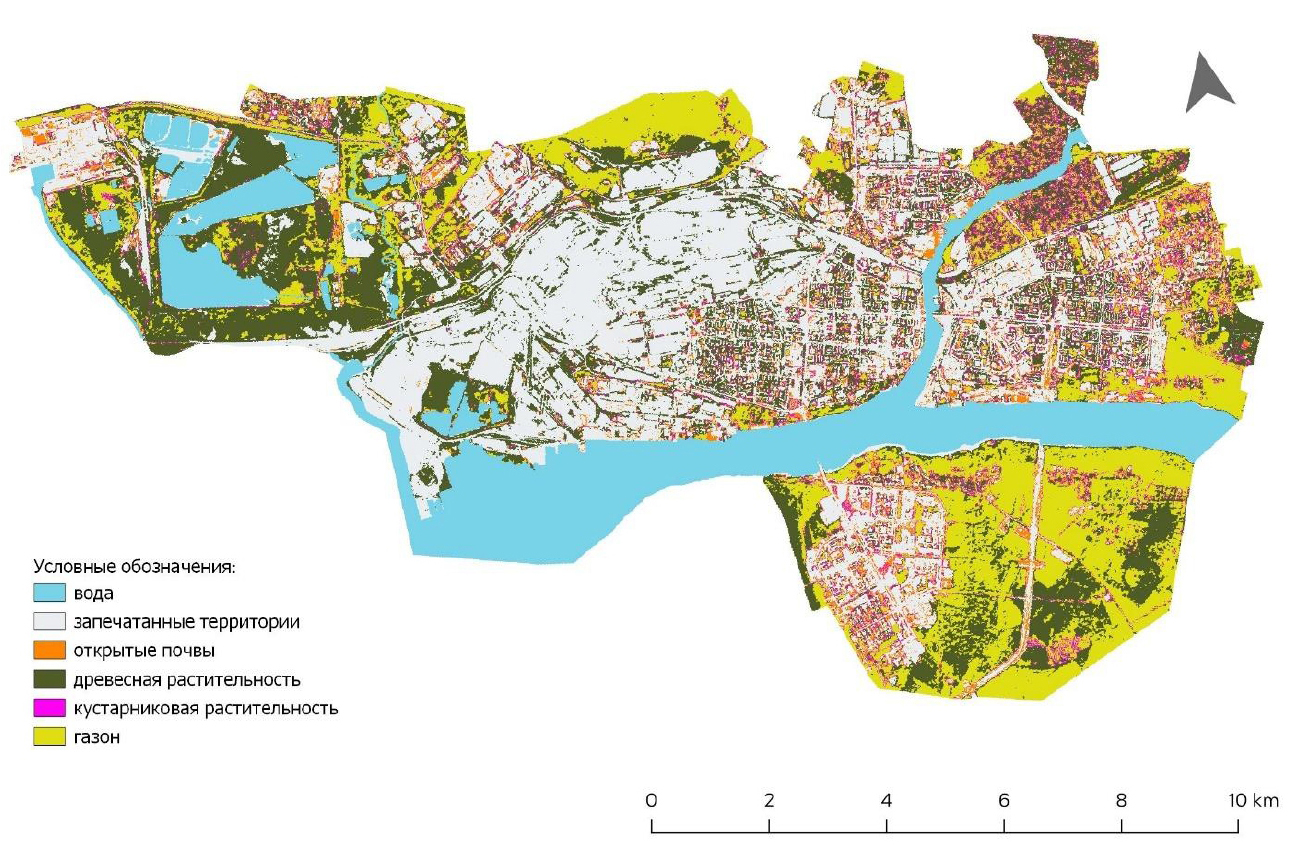The laboratory Smart Urban Nature worked as a consultant to the “Yauza project” bureau, which developed a project for the spatial development of the city of Cherepovets striving for a reasonable balance between the purpose of the object, the needs of people and the environment. Thus, the main goal in developing the concept was to bring nature to the city to create a comfortable living environment. With the proximity of major roads, the impact of the urban heat island, and the increasing number of extreme weather events associated with climate change, the regulatory functions of green infrastructure seem to be the most significant to assess and implement in the city development.
As part of the consultation, the laboratory specialists assessed the city’s natural environment and developed comprehensive solutions to optimize the spatial planning of urban green infrastructure.
Scientists from the SUN laboratory presented an analysis of the city’s environmental problems based on several key indicators, such as terrain activity, surface sealing, urban dust levels, heat stress, and water diversion. During the assessment, our specialists identified the features of the environmental parameters of the city, and also drew attention to the problems, the solution of which will help to improve the environmental situation in Cherepovets. For example, it was found that a significant part of the city suffers from dust pollution from traffic emissions and a lack of landscaping, and severe land sealing leads to an increase in the overall temperature of the city, and subsequently, to an increase in heat stress for citizens.
However, key attention was paid to assessing the level of accessibility of city parks – how many and how close to residential areas are green areas. Experts studied the level of provision of residents with green spaces in each district of the city and came to the conclusion that, despite the fact that Cherepovets is a rather green city, it lacks a solid network of green infrastructure. According to SUN Lab scientists, this conclusion is one of the key arguments for creating a connected green environment, which in the future will not only significantly improve the ecological situation in the city and the health of its residents, but also provide the city with additional transport dimension in the form of pedestrian and bicycle transit.
It is also worth noting that urban green infrastructure in this study is considered not only and not so much in the context of nature conservation in the city, but also as a component of the urban environment that is significant for sustainable urban development in general (sustainable development goals, UN SGL).
In the process of calculating ecosystem services, our experts were guided by the division of services according to their main functions: global climate regulation, microclimate regulation, water and pollution regulation.
Thus, the spatial analysis of the territory using remote sensing methods has made it possible to identify and interpret a number of urban environmental problems. Based on the analysis carried out, the scientists of the laboratory have developed proposals on how to solve them using “green” technologies. The integrated solutions plan included the basic principles for creating a green urban infrastructure, the necessary elements and functions of a green environment, as well as important practical steps – from assessing and taking inventory of the city’s green fund and regulating the creation, maintenance and care of green spaces to organizing a monitoring system and creating interactive map of green infrastructure.
All in all, SUN lab experts act as consultants on ecological matters of urban areas not for the first time. Our experts are keen to develop not only scientific and academic sides of their work but also apply the knowledge in practical cases and at the same time help to increase the awareness of the importance of urban green spaces as well.

